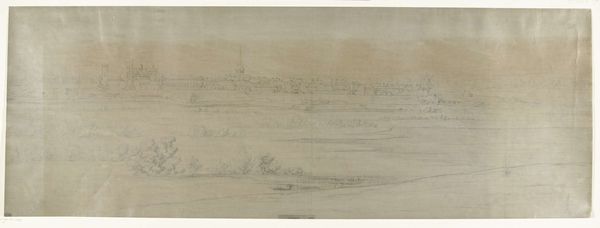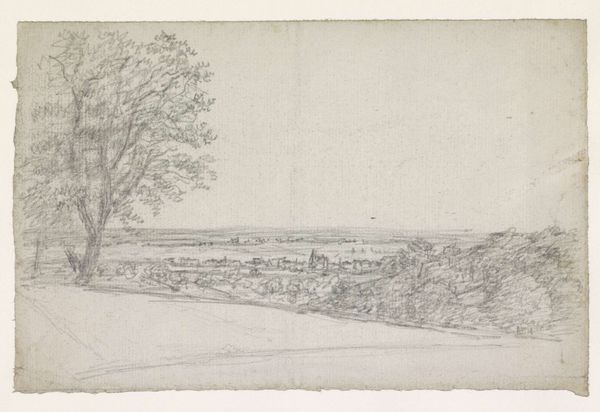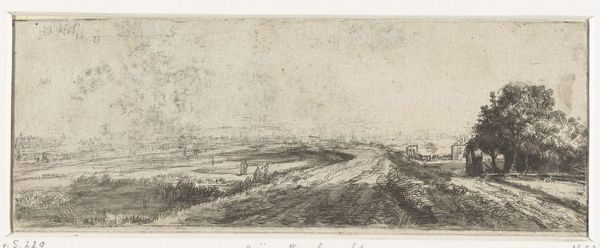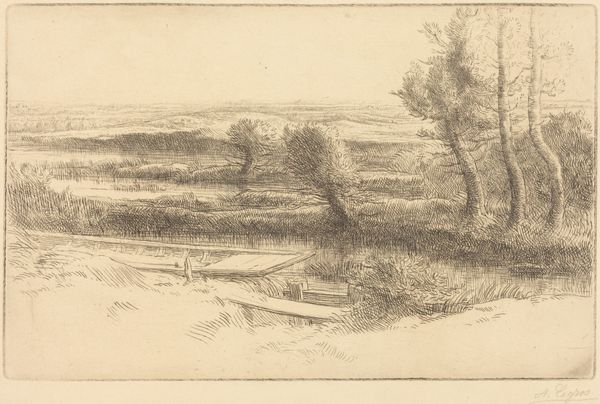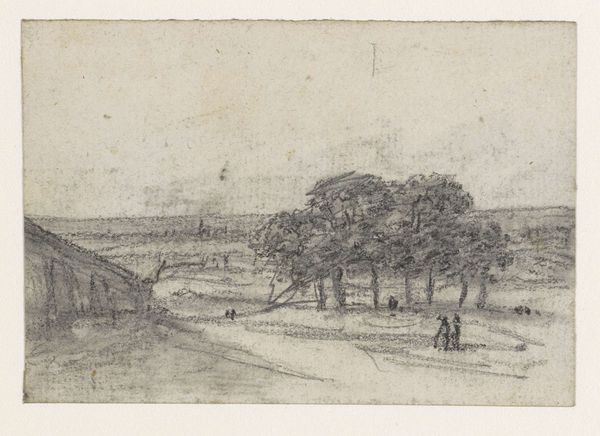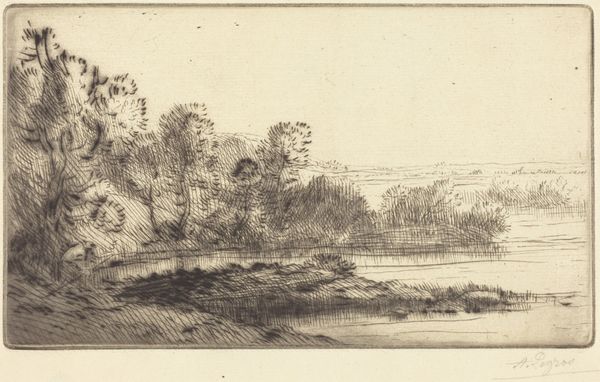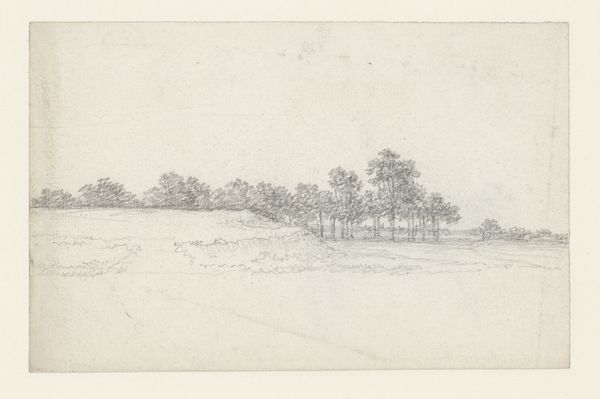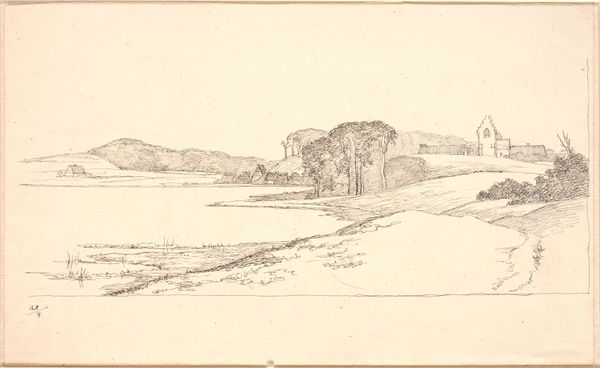
drawing, pencil
#
pencil drawn
#
drawing
#
pencil sketch
#
landscape
#
charcoal drawing
#
pencil drawing
#
pencil
#
watercolor
#
realism
Dimensions: height 274 mm, width 960 mm
Copyright: Rijks Museum: Open Domain
Curator: Looking at this pencil drawing, likely made between 1900 and 1903, what strikes you? This is "Gezicht op Tiel, 1672" by the brothers Moreau. It is titled "View of Tiel," although its historical accuracy seems interpretive. Editor: Hmm, it feels… ethereal. Almost as if Tiel exists in a half-remembered dream. That long winding road just seems to vanish into the distance. There is a peaceful quality here. It's funny, the very muted tones make the landscape feel vast. Curator: Yes, muted perhaps, yet the symbolic weight! Consider that winding road you noticed. Roads are potent symbols—journeys, choices, the very path of life itself. The barely-there cityscape on the horizon is full of promises. Tiel becomes more of an idea than a place. Editor: Exactly. More of an idealized version of what the town means, rather than just the buildings themselves. The vagueness somehow sharpens the experience of memory itself. I get this feeling of gentle longing when I look at this piece. Maybe because everything is cast in shades of gray! Curator: The artist definitely captures a feeling. Pencil sketches often are exercises in the dialectic between memory and expectation. I see also a hint of an old, old landscape. See those trees on the right? And the way they fade. This also captures the melancholy we often associate with nostalgia and reflection on the past. The Brothers Moreau created something of a phantom town here, full of the poignancy of loss. Editor: That's a beautifully put. And to think, they did this with humble materials: graphite on paper. It proves how sometimes simplicity amplifies emotional resonance. Looking at it this way, it almost functions like a collective cultural dream, filtered through their artistic imagination. I guess it invites everyone to consider what this specific landscape means for us individually. It's thought provoking. Curator: And like all good art, it rewards contemplation. Each symbol in the piece has been so perfectly evoked that you can meditate endlessly on what is on display. Editor: Indeed. Makes you think, doesn't it?
Comments
No comments
Be the first to comment and join the conversation on the ultimate creative platform.
